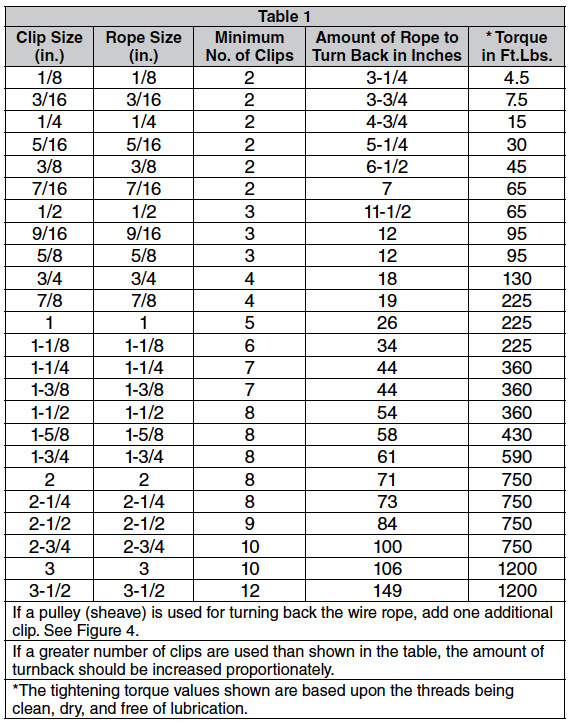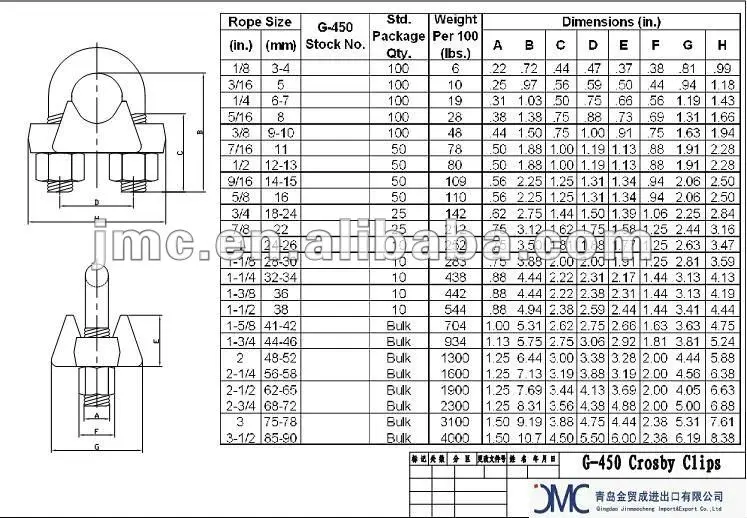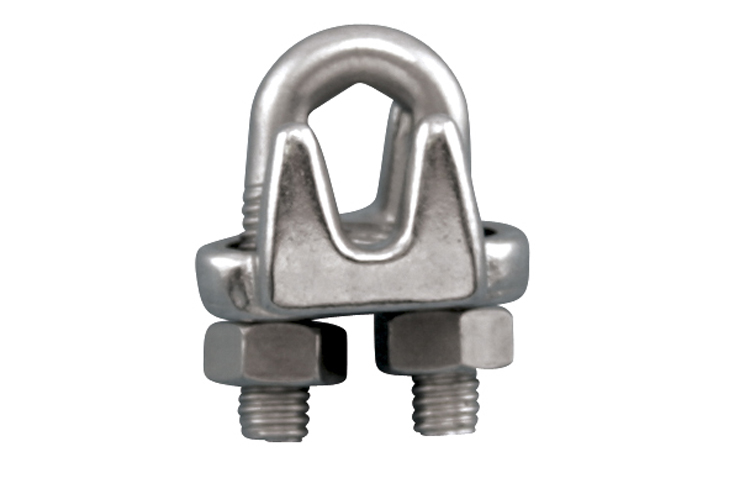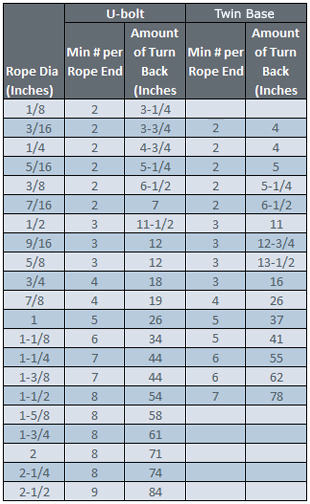wire rope clamp specification factory

Wire rope clip is otherwise known as a wire rope clamp, wire cable clamp, wire clamp, wire clip, U-bolt, etc. It is widely used for making eye-loop connections or join two wire rope cable ends together. The traditional styles of wire rope clips usually have three components: a U-shaped bolt, a forged or cast iron saddle, and two nuts.
The wire rope clips are available in a range of sizes and finishes, while you can easily find the difference from the appearance, traditional wire clips with u bolt, saddle and nuts, fist grip, stamped cable clamp.
Cast and malleable wire rope clips can only be used under light duty loads applications with relatively light loads, such as handrails, fencing, guard rails, etc.
While the drop forged wire rope clip variety is recommended for important, critical or sustaining overhead loads, such as guy lines, support lines, scaffolding, etc. The drop forged wire rope clips can be used in critical suspending, guying, and tie-down applications for the die forging process make them strong and more durable and the heating and hammering steps make their structure to be consistent and conform to the shape of the forged item.
Simplex and duplex cable clamps are also known as single stamped wire clip and double stamped cable clip are composed of stamping plate, saddle, and bolts, feature an aesthetic design, used for outdoor light duty applications.
Wire rope clips are available in a variety of materials and finishes but basically three types of materials, carbon steel, cast, malleable iron, and stainless steel.
Carbon steel wire rope cable clamps are galvanized, or hot dipped galvanized, the galvanised metal wire clamp has an added zinc layer to prevent rusting and protect against scratching and the addition of carbon corresponds with an increase in the hardness and strength of wire rope cable clamps. G, but stainless steel wire rope clamps are the best choice for corrosion-resistant applications that can be used for saltwater environments.
Commonly wire rope clamp installation is very simple, there’s a well-known saying can help you remember how to attach wire rope clips, that reads “never saddle a dead horse.” Just follow the recommendation ways:
Keep three or more wire rope clips attached at the end of the wire rope dead end, space between each wire rope clip should be at least 6 times the wire rope diameter.
You can see the correct and incorrect ways of installation from the following pictures and find how many wire rope clips to use at one wire rope loop.
The saddle shall be placed on the live end of the wire rope, with the U-bolt on the dead-end side—Remember the well-known saying: “Never saddle a dead horse.” Use at least two or three wire rope clips to secure the ends properly to the length of the rope, and tighten nuts evenly one by one until reaching the recommended torque.
If you have any wire rope clips questions, you can contact us by email at info@hilifting.com. We will be glad to share with you more useful information.

Simplex wire rope clip is one type of frequently used wire rope clamp. This wire rope clip has a simple design, but with strong and high corrosion resistance. It can be perfect for making eye-loop connections or complete loops in wire rope clip cable, we also have duplex wire rope clip for your option.

Wire rope clips, also called wire rope clamps, consist of a U-shaped bolt, a metal saddle piece, and two nuts. They are used in wire rope loop assemblies and are ideal for field installations. We offer several models to meet your specific needs.

The Wire Rope Clip is available in sizes ranging from 1/16″ to 1-1/4″ to ensure a perfect fit for every project. This wire clip is precision cast and made from grade 304 stainless steel for maximum corrosion resistance and durability. It is ideal for marine and industrial rigging applications.
Caution: Wire rope clips are not to be used on PVC coated cable without first stripping off the PVC. Wire rope clips should be installed over bare cable only and nuts must be re-tightened or re-torqued regularly.

The Heavy Duty Wire Rope Clip is available in sizes ranging from 1/8″ to 1″. This heavy duty wire clip is drop forged and made from grade 316 stainless steel for maximum corrosion resistance and durability. It is ideal for marine and industrial rigging applications.
Caution: Wire rope clips are not to be used on PVC coated cable without first stripping off the PVC. Wire rope clips should be installed over bare cable only and nuts must be re-tightened or re-torqued regularly.

The Crosby Group provides product users with “Red” U-Bolt Clips and forged Fist Grip Clips. Our wire rope clips meet the Federal Specification Number FF-C-450, considered the industry standard.
Compared to cast iron clips, forged clips provide a greater rope bearing surface and have been proven to be more consistent in strength and durability. Whether wire rope forged clips perform efficiently or not depends on whether the manufacturing practices were done properly.
First Grip Clips, for example, provide a saddle for both the live and the dead-end of the wire. This results in needing fewer forged clips for each termination. However, this is not the case with malleable cast iron clips. Forged wire clips reduce the possibility of hidden defects that are sometimes present in the cast iron clips. Cast iron clips should only be used in non-critical applications.
The wire rope clips are forged and galvanized, which ensures resistance to corrosion and rusting. The double saddle design eliminates the possibility of incorrect installation. The bolts are opposite one another, designed as an integral part of the clip. As a result, the nuts can be installed in such a way as to enable the operator to swing the wrench a full arc for easy installation.
The Crosby traceability system is actively used throughout all manufactured forged wire rope clips. All material analysis for each heat of steel is verified within our own laboratory.
We provide detailed warning information for all wire rope clips. Every clip is bagged or tagged with the warning information. This ensures that the information is available at the point of use for every wire rope clip during installation. The warning system is designed to attract the attention of the product user, with the goal to inform the user of the factors involved in the task and provide the user with proper application procedures.
Wire rope clips are used to fix the loose end of the loop back to a wire rope. These clips generally consist of a U-shaped bolt, forged saddle, and two nuts. The two layers of wire rope are placed in the U-bolt. The saddle is fitted over the ropes on to the bolt. The nuts secure the arrangement in place. When installing the clips, the saddle portion is placed on the load-bearing or live side. It is not to be placed on the non-load-bearing or dead side of the cable. This is to protect the stress-bearing end of the rope against crushing and abuse.
The size of the wire rope must be measured to allow selecting the proper size wire rope clip. The wire rope end must be seized prior to forming the eye to prevent the wire rope strains and core from shifting while forming the eye. The use of a soft wire to wrap the end of the wire rope is one method. Once properly wrapped, be sure to tighten the soft wire wrapping with plyers.
The number of clips required must be determined by referring to the information on the Crosby bag or on our catalog. Always use a thimble to protect the wire rope against wear and abrasion as it is used. Make sure the turn back is the proper length by using the tape measure to measure it.
As the clips are installed, it’s important to remember that the first clip is applied one base width from the dead-end, that should have been secured earlier. Always apply the U-bolt over the dead-end of the wire rope. Once the nuts are placed on the U-bolt by hand, they must then be tightened evenly. Using a torque wrench, alternate tightening from one nut to another nut until reaching the recommended torque.
The second wire rope clip is then applied as close to the loop or thimble as possible. When three or more clips are needed, space the clips equally between the first two. Take out any rope slack and place the nuts on these additional wire rope clips by hand. Tighten all of them with the torque wrench.

Wire ropes are one of the most critical pieces of rigging and lifting hardware. You can use wire ropes for lifting, rigging, and tying loads of virtually any size, shape, and type. To make the most out of wire ropes, however, you need a few additional rigging equipment, one of which includes wire rope clamps.
Also known as wire rope clips, riggers often use this nifty little piece of hardware at the end of the length of a wire rope. You can use a wire rope clamp to:
In short, a cable clamp is what makes a wire rope one of the most versatile pieces of rigging hardware. As these clamps come in different shapes, sizes, and materials, you will need to choose one that perfectly fits your lifting and rigging application. But before we get down to that, first, you need to understand what is wire rope clamp, its types, and a few other things.
It is a simple mechanical device. A typical wire rope clip consists of a saddle, U-bolt, and two hex nuts. This simple device is suitable for less permanent rigging and lifting applications. You must never use wire rope clips to make industrial slings.
The ASME B30.9 Slings standard clearly states that riggers should not use mechanical wire rope terminations that require periodic adjustments to create slings. In other words, you need to be careful when using rope clamps. You can use a wire rope clip to create an end loop for a winching or crane cable. You can also use it to build perimeter cables or increase the length of a wire rope going through a D-shackle or eye bolt.
Based on their shape, there are two types of cable clamps, U-bolt and double saddle. They both have unique mechanical properties and hence applications.
These cable clamps consist of a U-bolt, two nuts, and a metal base called a saddle. The U-bold passes through the saddle, which you can tighten with the two nuts. They come in various sizes and types of materials, including stainless steel and galvanized steel. You can choose a U-bolt wire rope clamp depending on your rigging or lifting application.
Usually, there are three types of materials used for making rope clips. You can choose a material based on your application as each one comes with its unique strengths and weaknesses.
In this type of wire rope clip, the base or saddle is made from forged steel. The manufacturing process involves heating and hammering the clips into desired shapes. Riggers often use these cable clamps for critical and heavy-duty applications as they are very strong. You can see them in winch lines, crane cables, hoist lines, towing lines, scaffoldings, guy lines, and even tie-downs.
The base or saddle is made from cast iron. As cast iron lacks the metal properties of stainless steel, it is not that strong. So, the malleable galvanized wire rope clamps are not very strong. They can break under heavy usage. You will see them being used in small or light-duty applications like fencing, parameter cables, or guard rails.
Stainless steel wire rope clips are arguably the best ones. The base or saddle is made from high tensile strength stainless steel. They are durable and easy to use. You can find these cable clamps in temporary guard rails, flag posts, and other outdoor rigging applications.
Wire rope clamps are an essential part of the rigging hardware. You can’t do away with them. But you have to make sure to use the right ones to keep the load and the riggers safe. If a wire rope snaps because you used the wrong type of clip, it can lead to disastrous consequences.
The first step in choosing cable clamps is to buy them from a trusted and reputed rigging hardware manufacturer. The last thing you want is to use a defective or poor-quality clip. This will compromise the safety of your load and your crew.
As you can see, each wire rope clamp comes with unique properties. You need the instruction manual to understand when, where, and how to use the cable clamps. Make sure the clamps are accompanied by respective user manuals when making a purchase.
By now, you know that some cable clamps are more suited for outdoor environments, while others aren’t. As a result, carefully think about where you want to use the wire rope clips. For example, if it’s a heavy outdoor application, stainless steel wire rope clamps would be a great fit.
Taking into account how large and heavy the load is also equally important. Heavier loads will require strong cable clamps that won’t break under stress. Also, you shouldn’t use clips for any permanent rigging or lifting applications. They are suited only for temporary load applications.
Lastly, it’s always better to get an expert on board when shopping for wire rope clips. Maybe you can hire an engineer or expert with considerable field experience to help you choose the right types of clamps. An expert will help you take every detail into account before making the purchase. Remember, if you choose the right cable clamps right off the bat, you’ll save considerable time and money down the line.
Wire rope clamps are one of the essential rigging hardware. They land wire ropes more flexibility, allowing you to handle a wide range of applications with ease and safety. These are some tips that will help you choose the appropriate clamp for your need.
HHI sells different types of clamps and other rigging hardware, both online and offline. If you are looking for reasonably priced and high-quality cable clamps or other hardware, check out our online store or reach out to our experts.

Custom manufacturer of open die steel forgings including forged steel gears, forged iron & steel hooks, forged steel swivels, forged steel valves, & forged steel wedges. Equipment used include oil hydraulic presses, ring rollers, & dies consisting of ASA flanges such as weldnecks, long weldnecks, slip-ons, well head dies, blind flange dies, & custom dies. Capable of making forgings from 100 lbs. to 30,000 lbs. in weight. Also stock distributor of forging materials including carbon steel, alloy steel, stainless steel, nickel alloy, aluminum, ASTM specification steel, Monel®, Inconel®, & chromium-molybdenum steel. Materials are forged to meet ASTM, ASME, ABS, & mil. specs.




 8613371530291
8613371530291